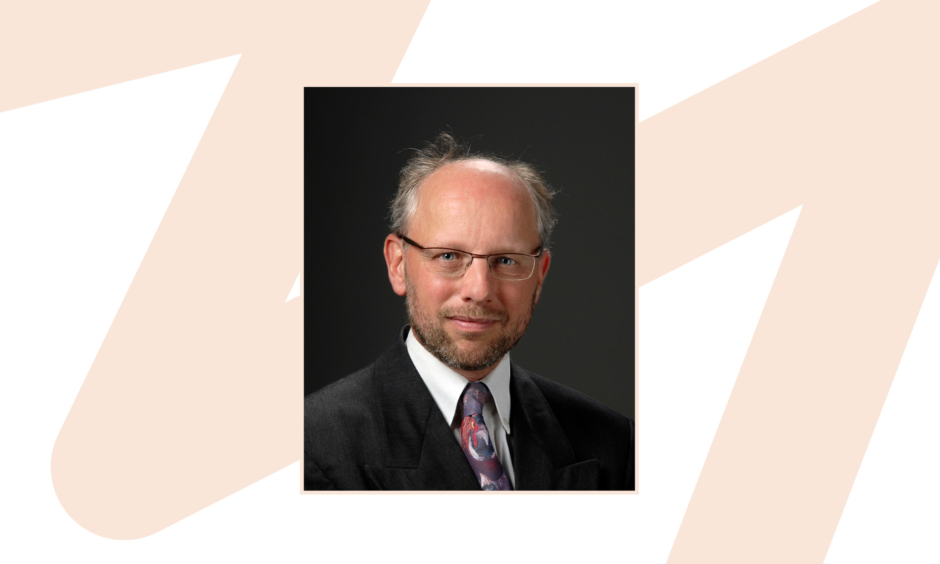Thomas Huizinga | Professor of Rheumatology, Department head of Rheumatology, Vice-clinical Educator; University of Leiden, the Netherlands
Citation: EMJ Rheumatol. 2023; DOI/10.33590/emjrheumatol/10308537. https://doi.org/10.33590/emjrheumatol/10308537.
![]()
Your research focuses on pathogenesis, early recognition, and treatment of rheumatoid arthritis and systemic lupus erythematosus. Where did this interest come from?
Since I was in high school I have always found these topics very interesting. But I was also very interested in pathogenesis and wanted to know how biology works. I became a doctor because I really want to help people and I thought I could help people best by understanding the pathogenesis. If you understand how the disease works, you can probably intervene and I therefore chose to get a PhD in immunology. When I specialised in rheumatology, it was logical for me to see many patients with lupus, but the other big chunk of our business is patients with arthritis. I really wanted to understand how arthritis develops over time, so I started taking pictures of people at all stages of disease development, from healthy to arthrosis, to arthritis, and then the different chronic steps. I was very much inspired by the cancer field. With breast cancer for example, you can cut it out and be healthy, but if it has started traveling all over the body, it is a much bigger problem and you can die. I had a very similar picture for arthritis, specifically questioning how it develops over time, which steps are involved, and whether we can treat it. When I was still a fellow, my boss, who I am very grateful to, told me to pick a disease that nobody wants to see because others will be happy to refer their patients to you. So, I chose lupus because it was not very well understood as a disease.
You graduated from the University of Amsterdam medical school, the Netherlands, and then studied at Dartmouth medical school in New Hampshire, USA. How did this experience in the USA impact your future work and research?
In two ways I think. First of all, the scientific approach there was really focused on basic science. At the same time, what I like about the USA is that the sky is the limit, you can do anything. It is really the spirit of the people to be very driven. It was fantastic and I have really tried to keep that going.
You’re currently the chairman of the National Post Graduate Educational Committee of Dutch Rheumatology. Could you tell us a bit about your role in that?
It is a group of about eight people from private practice and from academia and it’s a very practical committee. I think it is always good in postgraduate education to consider what the people want to hear and what they consider important to learn about.
Over the years you’ve won many prizes. Which achievement are you most proud of?
Recently I got a European Research Council (ERC) grant, which is a very competitive grant and I am very proud of that. At the same time, the first prize I ever got was a national prize here in the Netherlands. Of course, I was much younger then and it was like Christmas as a child, we were really happy. So there were parallels in the happiness I felt when I received this prize and when I received the ERC grant. It was also exciting for the field of rheumatology, because there are very few rheumatologists who have received such grants, so it also shows that our field has matured.
What do you believe are the biggest gaps in the current literature and which topics merit greater attention?
I think the biggest gap in the literature is how to fully understand the problems related to the patient. If you think about it, there have been 20 Nobel prizes in immunology, so we understand it quite well. We also understand what outcomes patients have such as swollen and painful joints. At the same time, there are other problems and patient reported outcomes, which have a big impact on them and we don’t understand. For instance, a big problem for patients is being tired, and we don’t understand that very well. I think the biggest gap in literature is understanding what the biology of certain parts of the phenotype is. If you don’t understand how the biology works, it is very difficult to intervene. So, I really hope that in the next 5 years we get more insight into that. The other big problem is that we do not understand why the disease is chronic. Specifically, we do not understand the mechanism behind it. However, this is easier to understand from a biomedical point of view, compared to things like tiredness, so I think we will make more progress on this.
Are there any noteworthy projects you are currently involved in?
I am very much involved in research concerning the progression of arthritis. Specifically, we have identified a monoclonal antibody in patients, which is very predictive of arthrosis. Subsequently, we have identified a unique feature of this antibody. It is a little bit bigger than normal antibodies due to an extra sugar on the antigen binding site. The minute you develop the sugar, you can be sure that you will develop chronic arthritis over time. So, what we are trying to understand is the biology, how that works, and what kind of signal the sugar gives to the B cells.
As an educator, where can we expect to see your focus lie in the coming years?
I think clinical education is an enormously important issue. The good thing about being a clinician is that you improve over time. I am now 62 years old, and I have been doing this since I was 26 years old. My focus is on sharing my experience with younger doctors and I am doing that actively. I believe this is important because the holistic view of being a doctor is not easy to develop. When you first qualify, you have so much to focus on, it is easy to forget that the patient is more than a patient, they are also a human being. Essentially, I like to educate to people on the art of medicine.
Over the 30 years you have been practicing as a rheumatologist, how have you seen the field change, specifically with regard to the advancements in technology and therapies? What do you think has been the greatest development?
The biggest advancement is the better use of our drugs. When I started in rheumatology, I saw many patients in wheelchairs with rather horrible disease. Now, many people can live a normal life due to the proper use of anti-inflammatory drugs. The second big advance is targeted drugs. In the old days we tried many chemicals in the lab without exactly knowing how they were working. Then if it worked in animal models, you went to patients, which was really a trial-and-error process. What you see now is that we understand the biology much better. We know that this cell talks to the other cell via certain cytokines, so we can block these cytokines and expect the patient to get better.
How do you see these changes continuing and what future changes to you expect to see in the field?
Over the next 5 years we want to block chronicity so that arthritis is not a chronic disease anymore. I think that is the logical change we would want to see, as that means you can cure a disease. I really think we are on our way to achieve that, which is an enormous, fantastic thing.
Is there anything else you would like to add?
What I would like to add is that this career has brought me so much happiness. I still have very good friends from high school and university, who went on to become bankers or teachers, and say they look forward to retirement. I do not look forward to retirement at all as I love my job. So, what I would like to share is the enormous happiness you can get out of being a rheumatologist.








